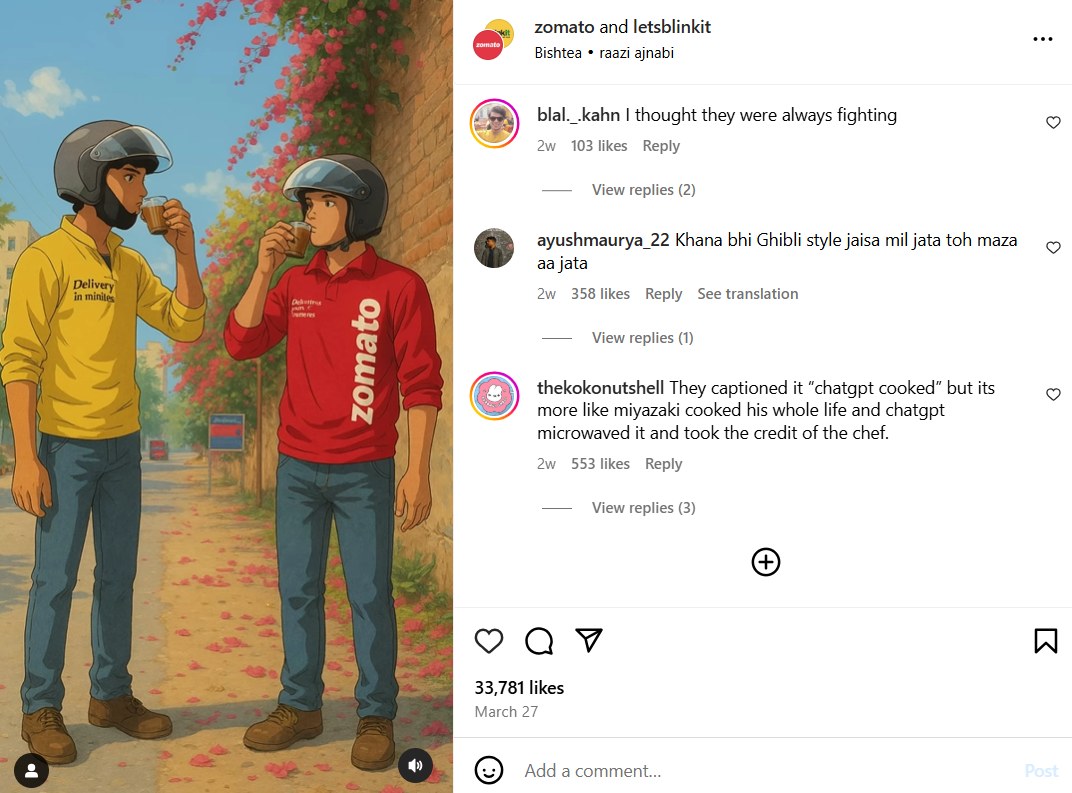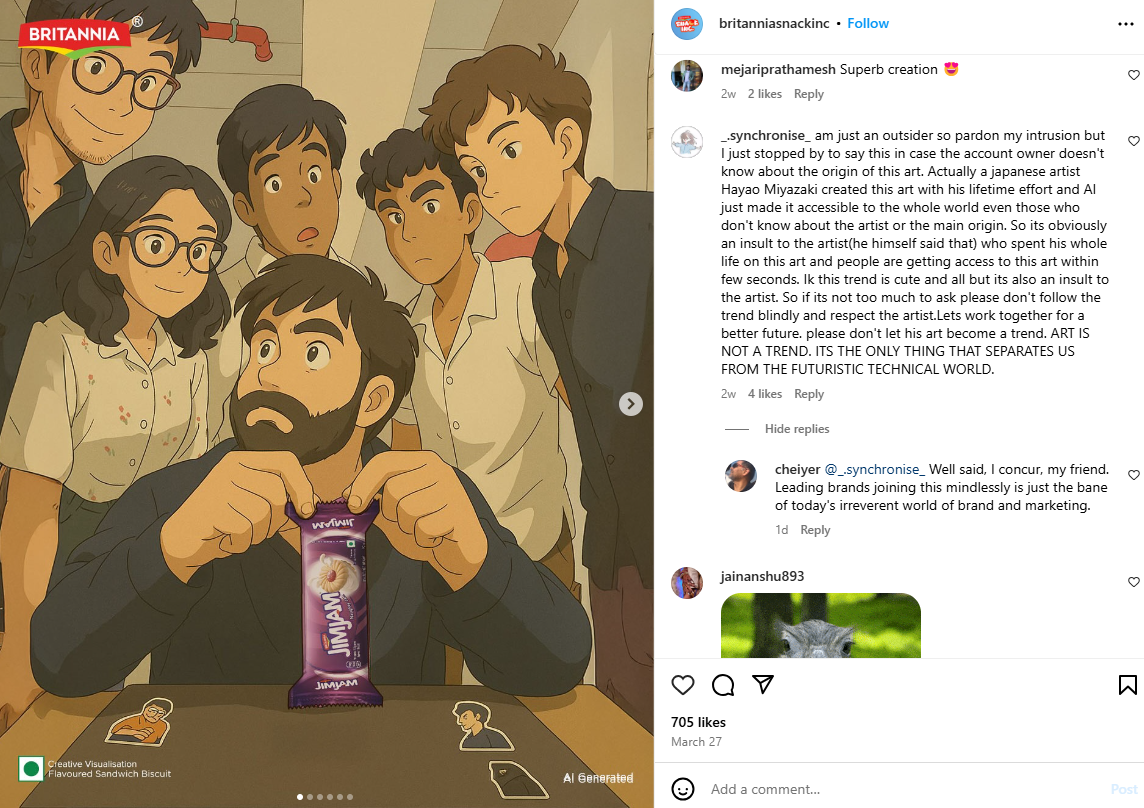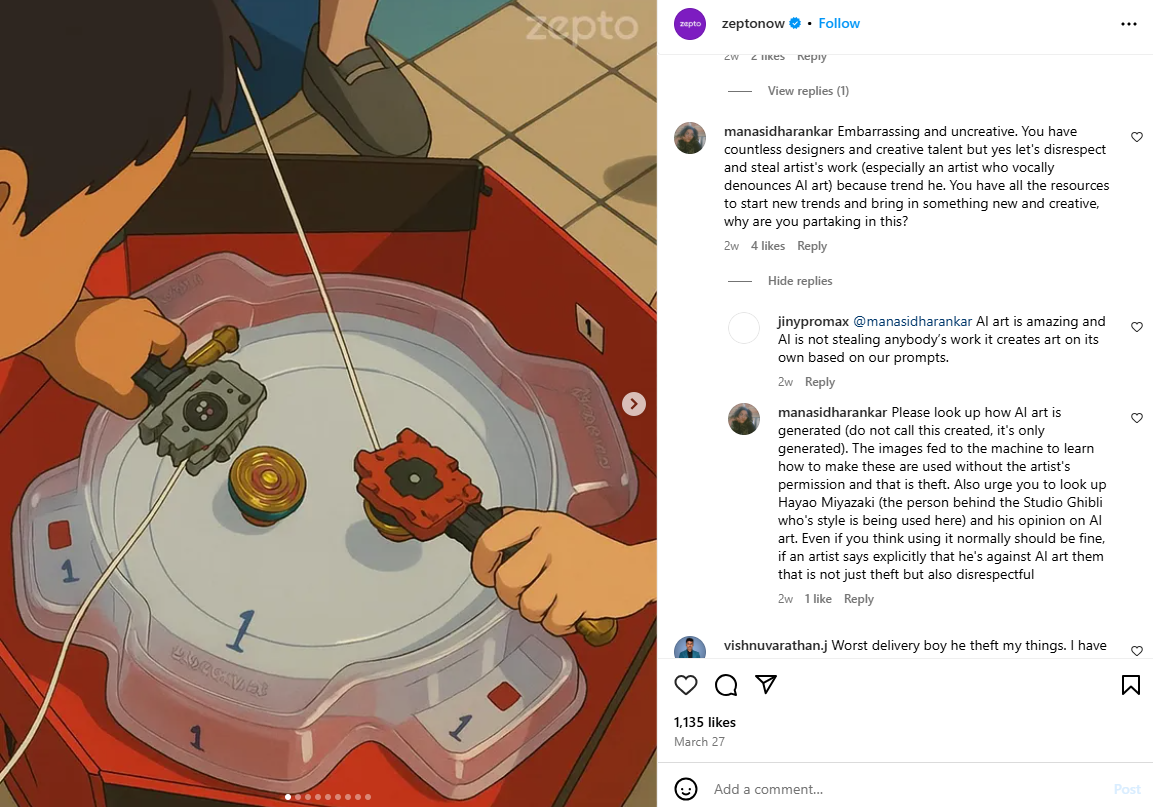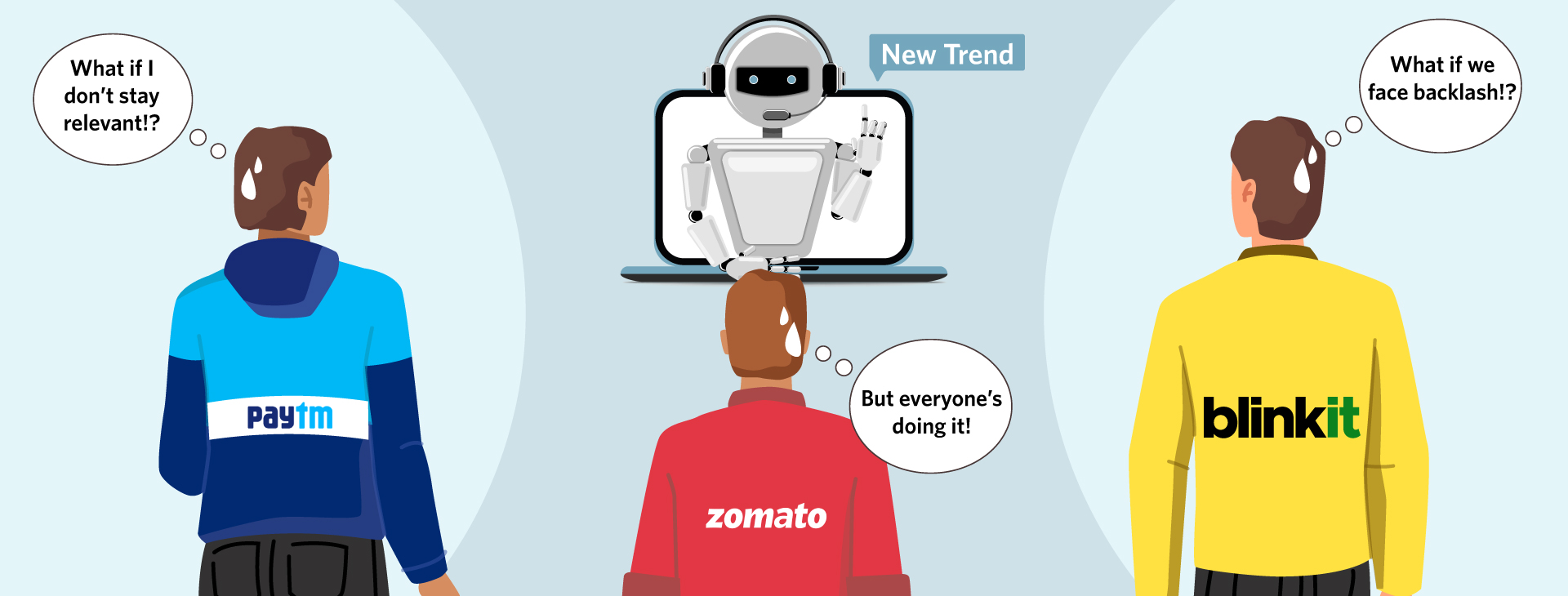Is Following Every Trend Worth the Risk for Brands?
The experiment-turned-trend of using AI chatbots to convert personal images into Studio Ghibli-inspired art has taken the internet by storm. From people turning themselves into Ghibli characters to others raising concerns about privacy, fair usage, and copyright violations—the conversation is as striking as the art itself. But where do brands fit into this narrative?
In the digital age, brands feel the pressure to stay relevant by engaging in the latest online trends. After all, being where your audience is—and participating in what they’re talking about—is considered key to maintaining a strong digital presence. However, the rapid rise of the Ghibli trend highlights a critical question: Should brands jump into every trend without thoroughly evaluating the potential risks?
After the initial hesitation, the corporate world has largely embraced AI as a tool to streamline work processes and increase productivity. But simply adopting AI is one thing—integrating it responsibly into brand strategy is another. When the Ghibli trend surfaced, some brands, eager to boost their visibility, began sharing Ghibli-inspired illustrations of their employees. The logic seemed simple: jump on the trend while it’s still hot, and enjoy increased reach.
But what happens when the trend backfires? We’ve seen it happen before. Remember how Netflix’s use of AI art in an anime, citing a labor shortage, invited major backlash? In a digital landscape where consumer awareness and scrutiny are at an all-time high, reading the room is crucial. A trend that appears harmless can quickly turn into a PR nightmare if it’s perceived as insensitive or exploitative.
In the case of the Ghibli trend, the backlash came almost immediately. Social media erupted with criticism, accusing brands of being tone-deaf for appropriating a beloved artistic style while ignoring copyright concerns. Even major names like The Body Shop, Zomato, Swiggy, Blinkit, Britannia, and Paytm faced backlash for jumping on the trend without considering the consequences. One particularly pointed comment on Zomato’s post read, “They captioned it ‘chatgpt cooked,’ but it’s more like Miyazaki cooked his whole life, and chatgpt microwaved it and took the credit of the chef.”



The crux of the problem lies in the very foundation of AI image generation: data scraping. OpenAI, one of the platforms used for creating these Ghibli-style images, has faced multiple lawsuits for training its models on copyrighted content without permission. Though OpenAI claims to have updated its tool to reject requests that mimic the style of living artists, the Ghibli trend has shown that gaps still exist. Many elements in the images generated reportedly borrowed directly from iconic scenes from Studio Ghibli films like “Howl’s Moving Castle” and “Spirited Away”—films crafted by the legendary (and very much alive) Hayao Miyazaki.
Brands, as staunch defenders of their own intellectual property, need to think twice before inadvertently infringing on someone else’s. In a landscape where audiences are quick to call out perceived insensitivity or hypocrisy, brands must be more cautious about jumping into every viral trend.
This is where expert digital agencies become indispensable. They provide the essential perspective needed to gauge whether a trend aligns with a brand’s values and long-term strategy. In an era where consumer awareness shapes purchasing decisions, agencies can help brands navigate the fine line between participation and backlash.
So, the next time a trend like the Ghibli one comes along, brands would do well to take a breath, assess the landscape, and think beyond the initial boost in engagement. In the fast-moving world of digital communication, sometimes it’s smarter to be the brand that didn’t jump on the bandwagon.

